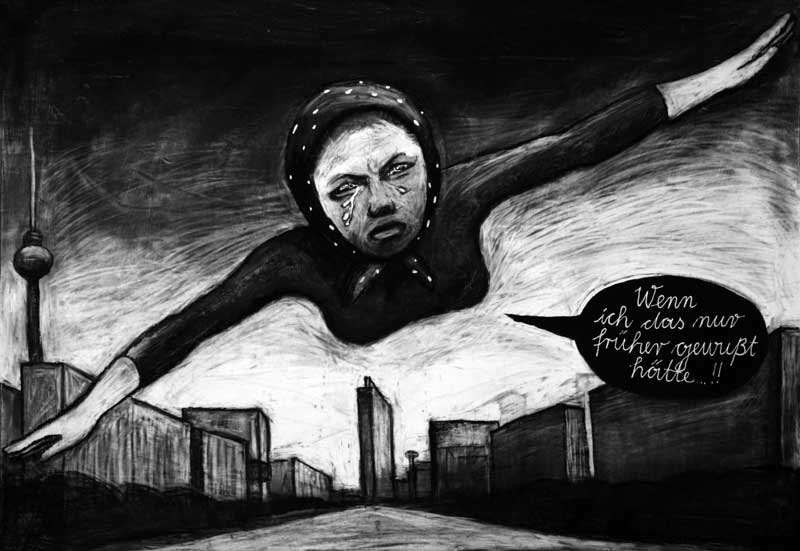A fundamental research project that examines the conditions, characteristics, and structures of visualities of gender in comics. It is the first systematic analysis of German-language comics on this scale.

Abstract
A fundamental research project that examines the conditions, characteristics, and structures of visualities of gender in comics. It is the first systematic analysis of German-language comics on this scale.
Representations of gender in comics are diverse and demonstrate the importance of gender as a structural category. When it comes to this topic, characters like Jerry Siegel and Joe Shuster’s idealized body of strength, Superman, often come to mind--as do sexualized representations of women in superhero comics such as Wonder Woman or Catwoman. However, the project Visualities of Gender in German-language Comics is dedicated to the numerous examples from the German-speaking world, from Anke Feuchtenberger and Katrin de Vries’s constantly (de)forming bodies in Die Hure H (1996–2007; W the Whore, 2013) to Ulli Lust’s critique of gender roles in Heute ist der letzte Tag vom Rest deines Lebens (2009; Today is the Last Day of the Rest of Your Life, 2013) to Regina Hofer’s abstracting and alienated bodies in Blad (2018; Fat, 2021). In each case, comics work with or through established concepts of gender and identify bodies as carriers of cultural inscriptions. Comics research intensively examines this subject area based on individual representations; despite this, a structured collection and investigation of the “visualities of gender,” also in order to fully comprehend their sociocultural productivity, had previously been lacking.
This project provides crucial groundwork in this regard by examining the conditions, characteristics, and structures of visualities of gender in German-language comics and contributing to the development of Austrian comics research through its location at the University of Vienna and the University of Music and Performing Arts Vienna.
The theoretical frame of reference includes Literary Studies, Visual (Culture) Studies, and Gender, Queer, and Intersectionality/Interdependence Studies. The main questions are: How do comics narrate gender, corporeality, sexuality, and desire? Which theoretical, political, and aesthetic traditions do they follow or deconstruct? How do they (re)produce and stabilize binary gender norms? What possibilities do they offer for subverting or breaking such norms?
Susanne Hochreiter, Marina Rauchenbacher, Katharina Serles, and Naomi Lobnig are addressing these questions in line with the three central aims of the project: After collecting and indexing German-language comics with an explicit reference to gender, the findings will firstly be annotated and made available to a broad, international public as an open-access database. Interdisciplinary thematic clusters will be prepared, and a glossary of important terms will be compiled. Secondly, qualitative, theoretically guided individual analyses will be carried out to evaluate examples of the material. A meta- and self-referential level will be introduced to offer an in-depth and updated theory of the comic medium and critically reflect on previous comic research. Thirdly, theoretical and artistic contributions will be brought together in a book in order to present readings of German-language comics research for discussion that are innovative in terms of both content and form. The volume’s approach corresponds to the close interweaving of academic and artistic work in Comics Studies. It offers an innovative handbook concept to engage interested readers beyond academia.

